September 16, 2013 |
BITE: My Journal
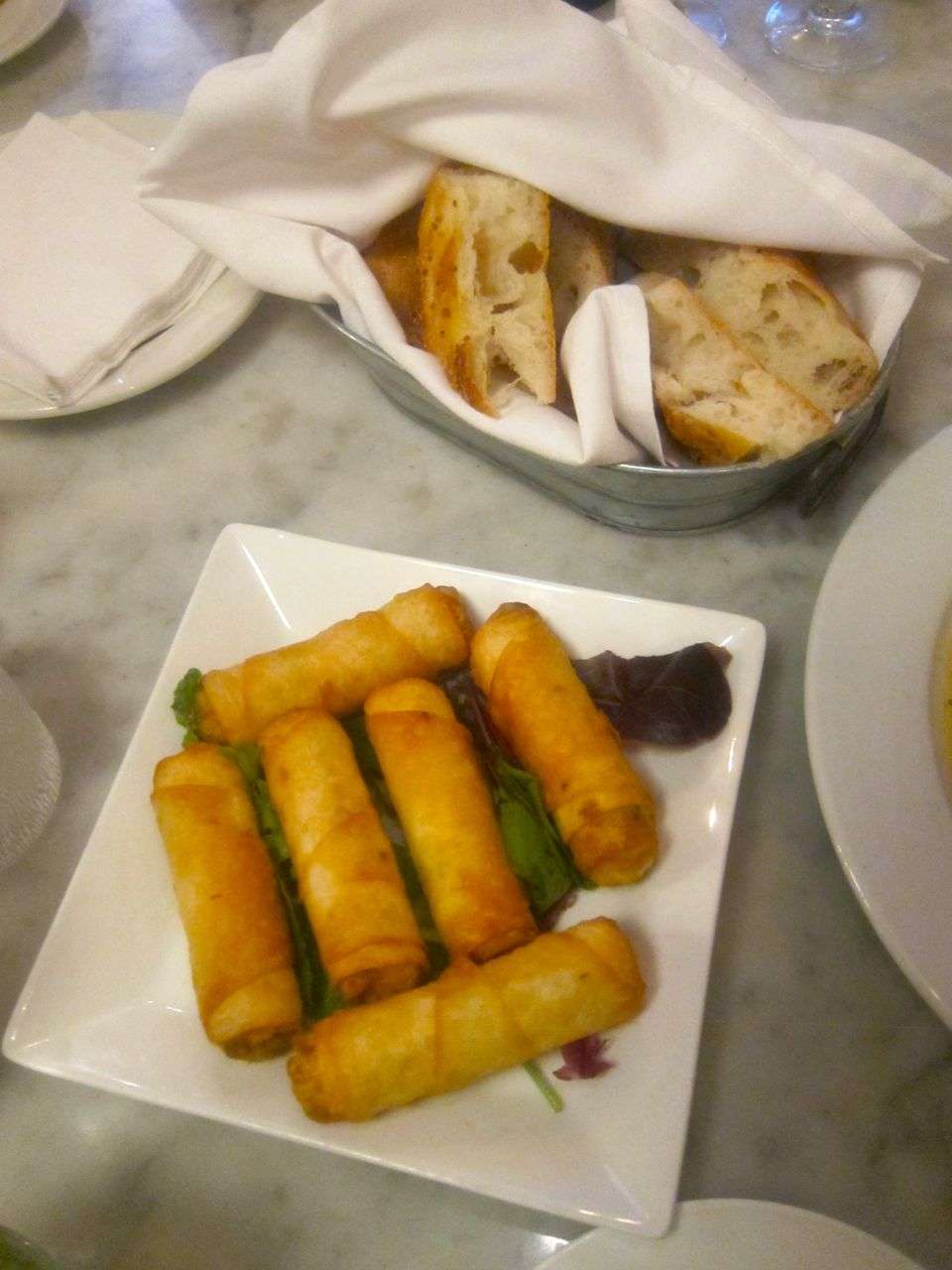 Crackling feta-filled börek from Orhan Yegen’s kitchen are a miracle of crispness.
Crackling feta-filled börek from Orhan Yegen’s kitchen are a miracle of crispness. Anna, a young Turkish woman, had joined our Friday night ethnic-eating buddies the previous week, and of course, we asked where she goes for Turkish food. Sip Sak, she said. I was running late the following Friday. By the time I found the charming green metal-guarded storefront, our posse had assembled. They were frowning and muttering.
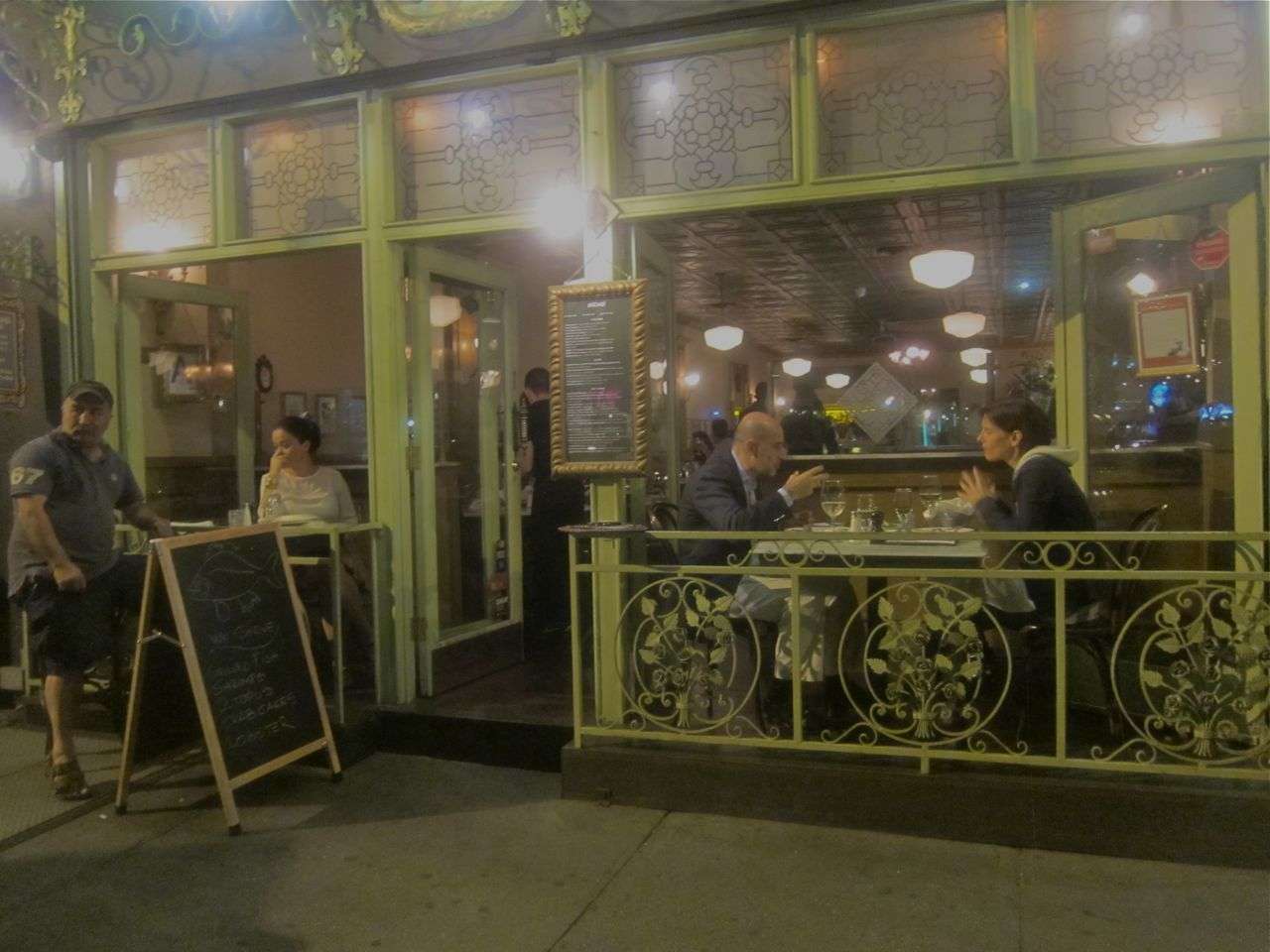 It could be a French brasserie, a New Orleans luncheonette or an ice cream parlor.
It could be a French brasserie, a New Orleans luncheonette or an ice cream parlor. “I see you have already met the infamous Orhan Yegen,” I say, taking my seat and interrupting the perpetually grumpy owner in a stultifying lecture on how to eat Turkish food. “He is notorious.” He acknowledges my arrival with a glower. Cocktails might help. My friend, the ethnic food junkie, contemplates a Turkish red.
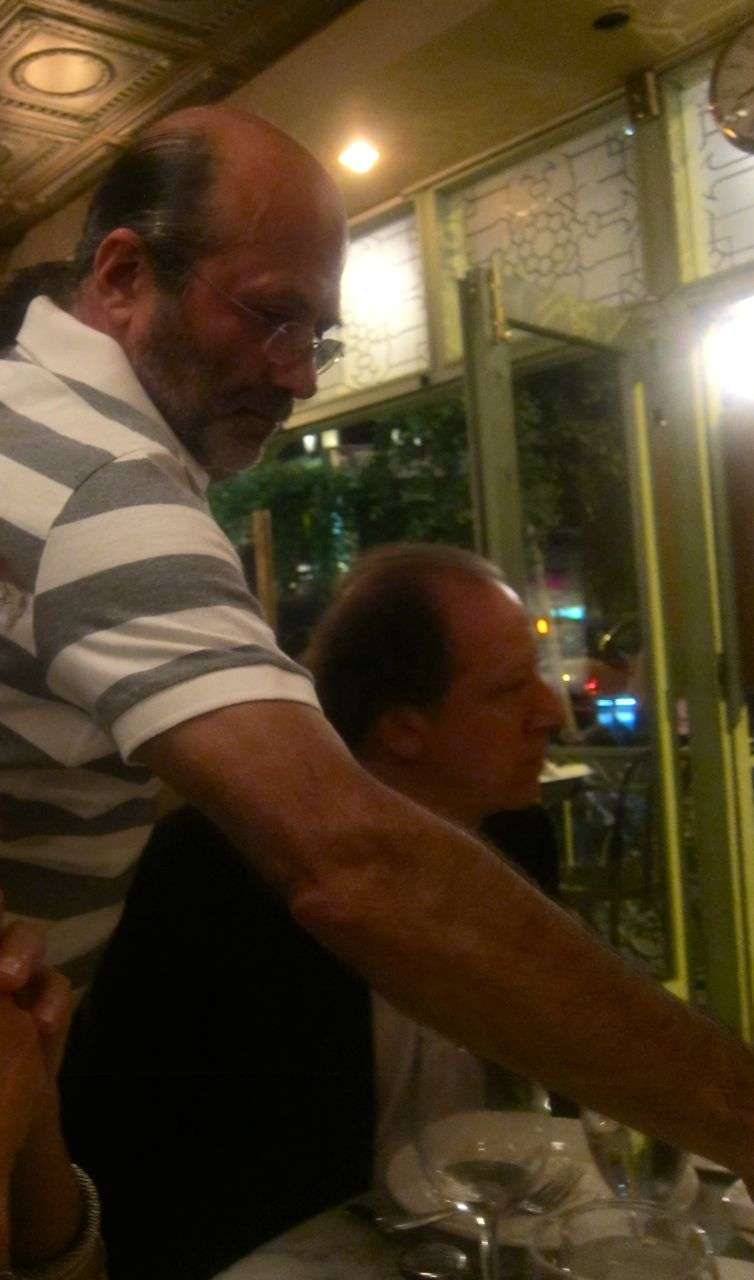 I’ve cut the infamously grumbly chef-host off mid-rant at our table.
I’ve cut the infamously grumbly chef-host off mid-rant at our table. I begin, “This is the man who was so unhappy that everyone loved his meze and ignored the main courses at Beyoglu, that he went off to open a restaurant where there were no meze, only main courses. But alas, nobody liked it.” I hate myself sometimes. With his spectacles and graying ponytail, the Don Orhan Quixote seems almost vulnerable. “My friends are here to talk to each other, Orhan, not to listen to you,” I say, when he continues to vent.
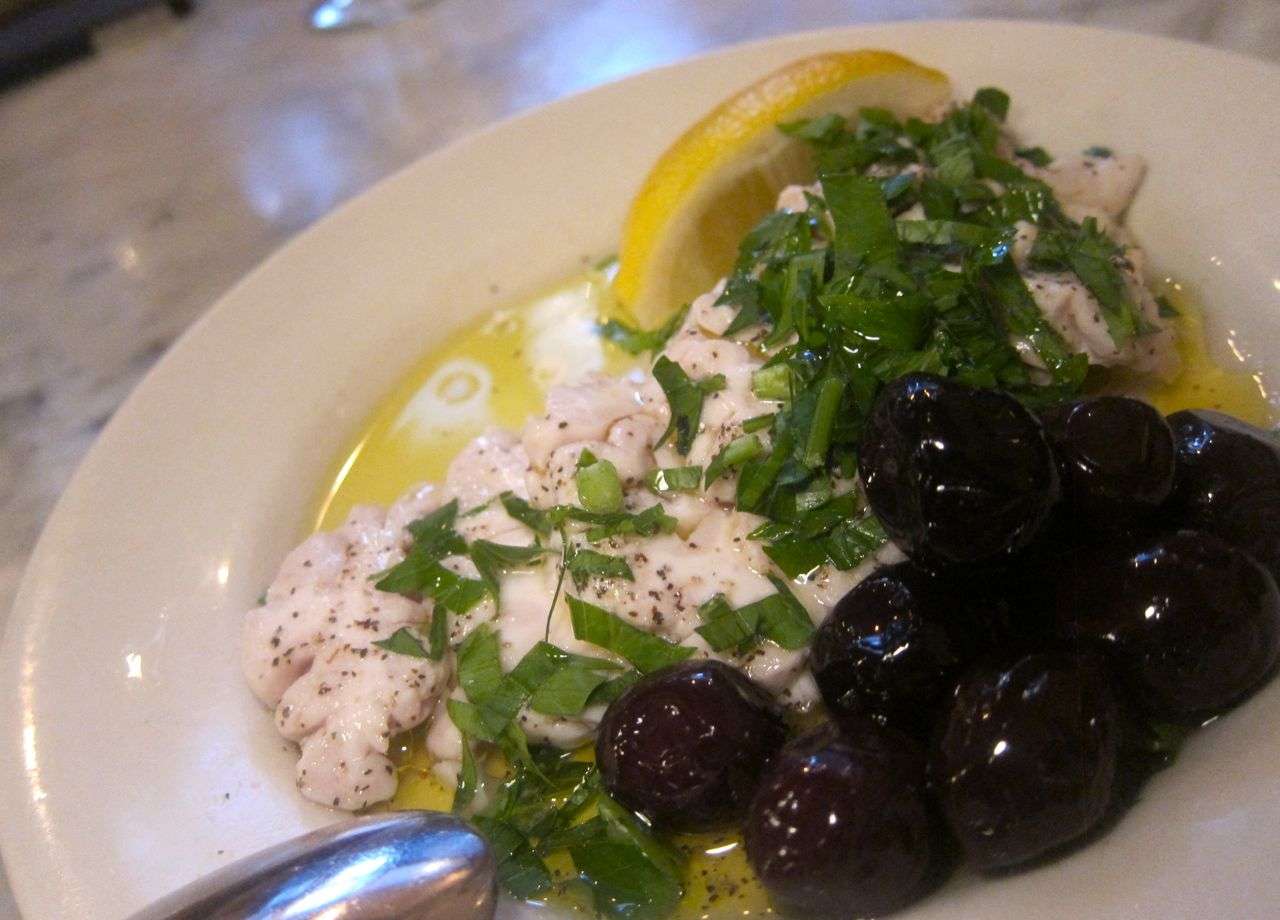
Secretly I’m pleased that some of my friends don’t eat brains. Another bite for me. “I’ll tell you the specials,” he says. “Brains. Just brains. Very simple. Mussels but not how you think. No, tonight we do not have the eggplant that makes the emir faint,” he responds with a sigh to a flirtatious request. “The special is eggplant stuffed with rice tonight.”
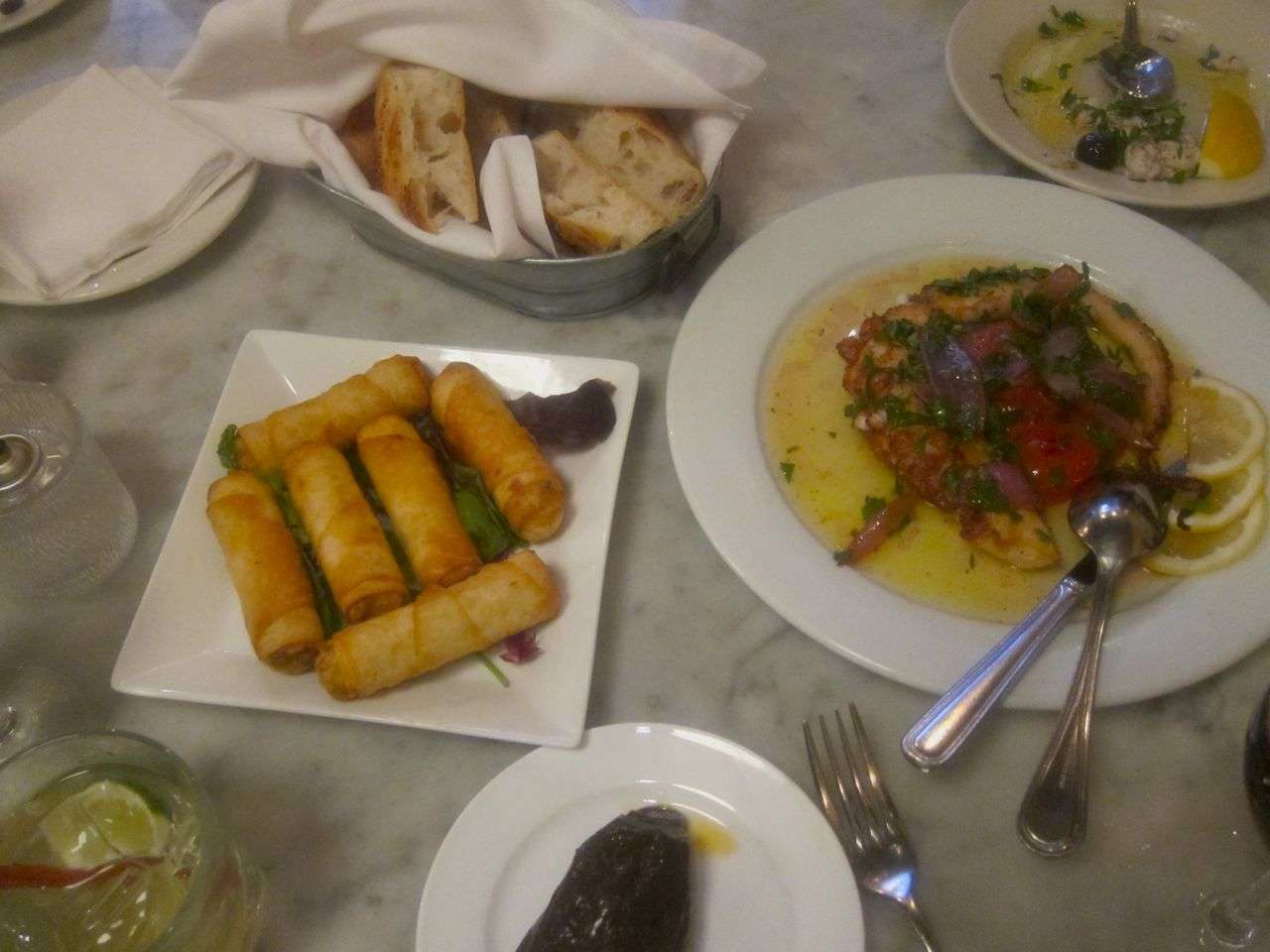
The kitchen never stops sending out fresh baskets of crusty warm pide bread. Across our big, bare marble round I hear our Turkish guru discussing entrees. She doesn’t seem to understand that Turkish main courses are usually heavy and disappointing compared to the brilliant starters. But that could be because she is from Turkey and doesn’t know they are awful. I suggest everyone choose two different meze and we’ll tell the server to bring them in waves. I am hoping we’ll fill up on small plates and avoid the usually lackluster entrees.
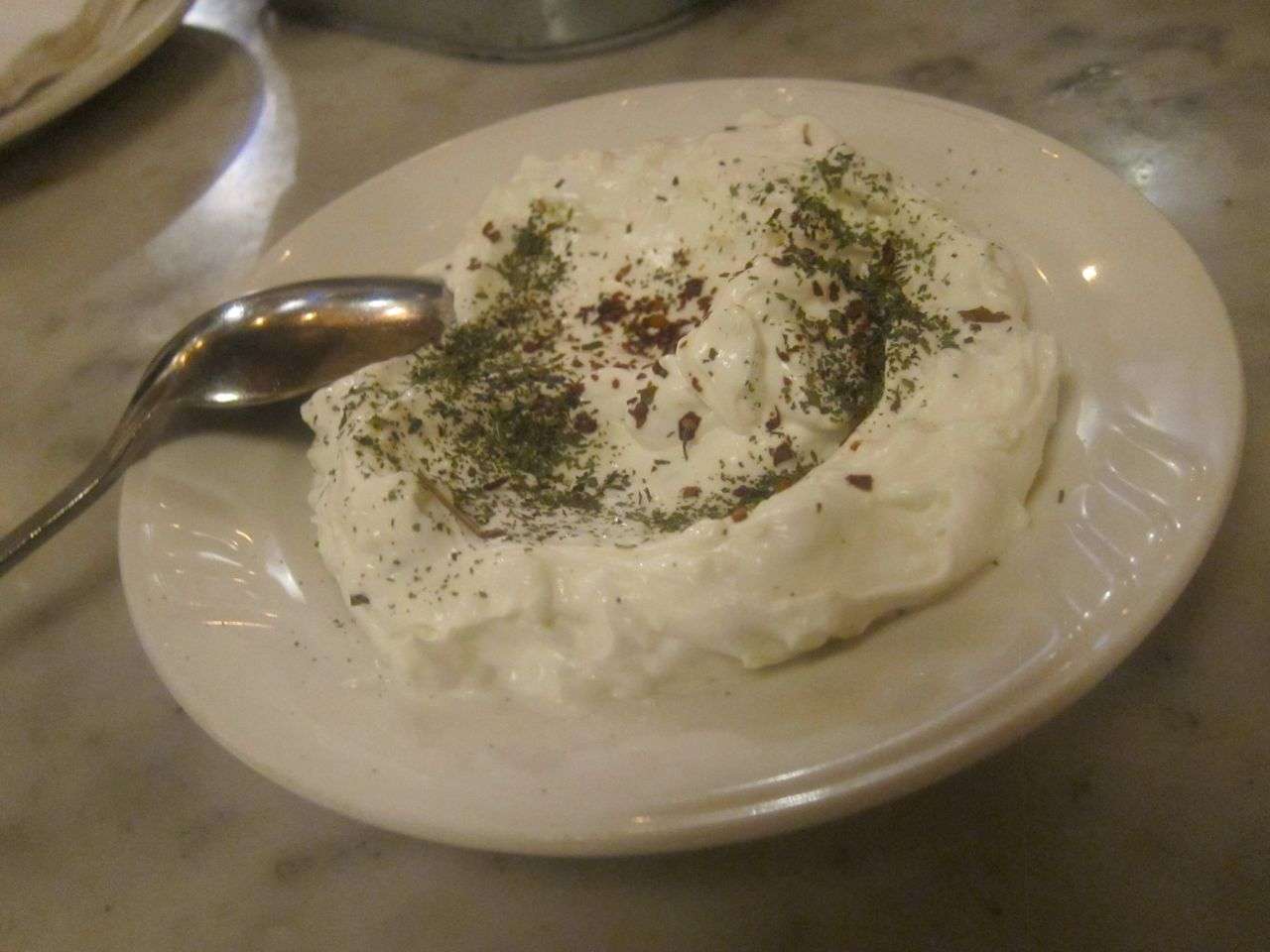
Call it garlicky yogurt or cacik with shaved cucumber, it’s a must for me. I study the menu. How strange it looks. It is almost totally in English, unless you count hummus – an American generic now. I search for my favorites but it says creamy yogurt, not cacik, charred eggplant, not patlican salatasi, crispy phyllo rolls, not sigara boregi or even börek. It doesn’t specify Shepherd’s salad.
“We get so many tourists,” is his explanation. “I let them ask questions. Turkish people don’t look at the menu. They just ask, “What do you have?”
I’m so confused, I forget to check if he has my favorite from Beyoglu – the thrillingly tart ezme with minced tomato, chopped onion and pomegranate molasses. (He insists it doesn’t hold up if made too far ahead, but he sometimes does a smallish portion to order.) I don’t notice another must: the carp roe tarama topped with crab. He sends it as a gift.

I’m tempted to order an encore of the evening’s special rice stuffed mussels. A tin basket of thick, crusty pide triangles kept warm in a napkin, start the seduction. The charred eggplant, a gossamer mousse with a smoky aftertaste, is even lighter than I remember. Plump mussels are packed into their shells with a luscious stickiness of raisins and pine nut studded rice. Should we get seconds?
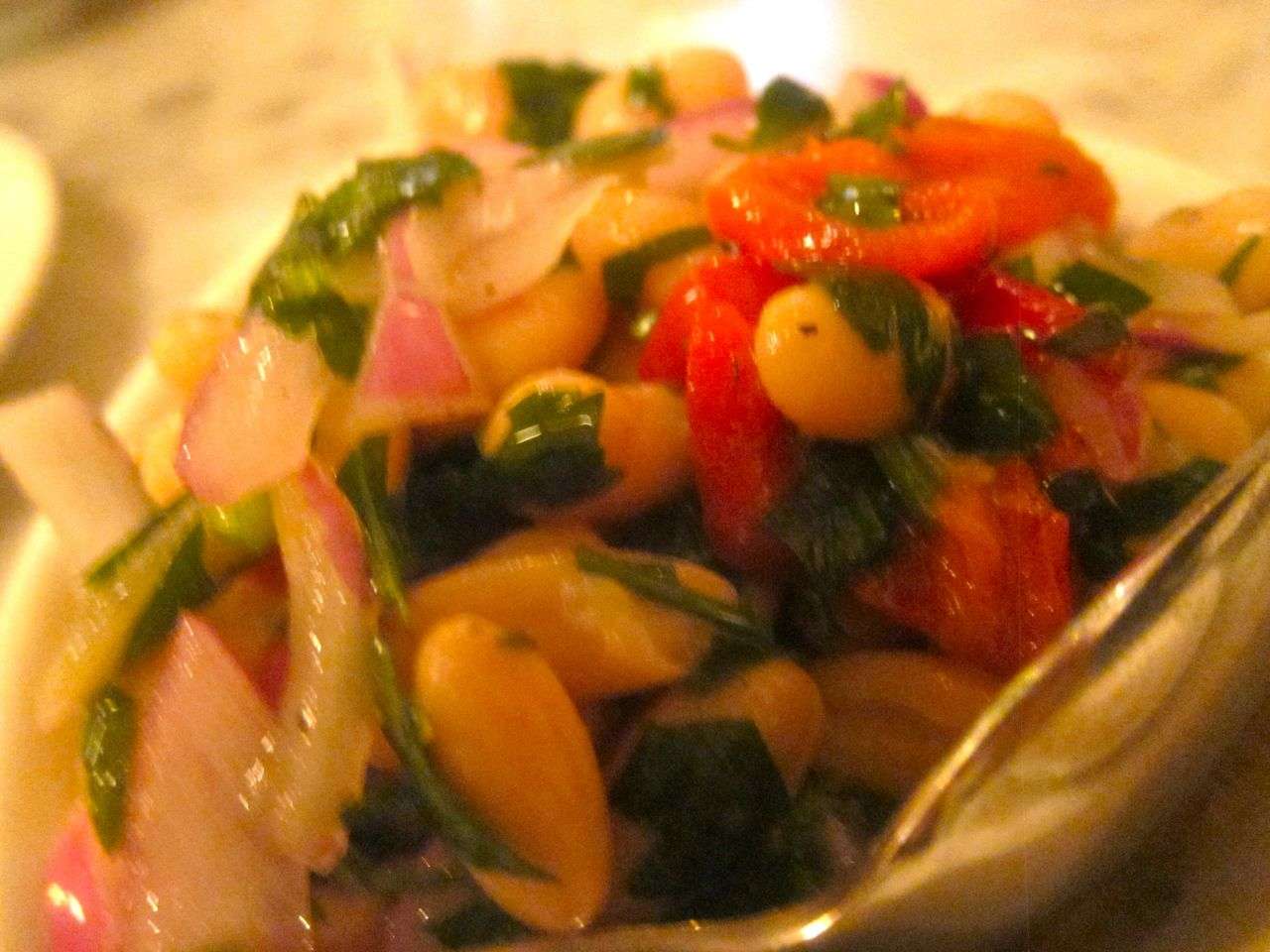
Nothing is wrong with white bean salad amongst all these creamy spreads and dips. Those who have never eaten brains but are willing seem taken with the silken texture. I’ve loved brains in every guise I’ve ever tasted them and rarely see them. These are simple, unembellished, with a huddle of oil-cured olives alongside to fill up the plate. There are enough small rice-stuffed eggplants for everyone. We didn’t order hummus with pide crisp, but it arrives anyway.
It’s reassuring to be right. The meze are mostly as wonderful as remembered. Again and again, the manager sends out a fresh supply of warm pide, the essential carrier for every drippy bite. Periodically, she consults with Orhan, who’s keeping an eye on us from his seat at a window table.
 The crispy feta-filled phyllo rolls are a miracle of careful frying.
The crispy feta-filled phyllo rolls are a miracle of careful frying. You really want to concede Yegen his litany of braggadocio when you bite into a crackling phyllo roll filled with crumbled feta and dill, nicely salty and greaseless. There is barely enough grilled octopus on the $18 “appetizer” plate under petals of roasted red onion, but it’s so good, we ask for an encore. Bargain-hunters will appreciate that most of the starters are $7 to $9. Sizzling shrimp in garlicky lemon butter or half a lobster are more. Entrees range from $16 to $22, unless you order a whole fish or a fish baked in salt.
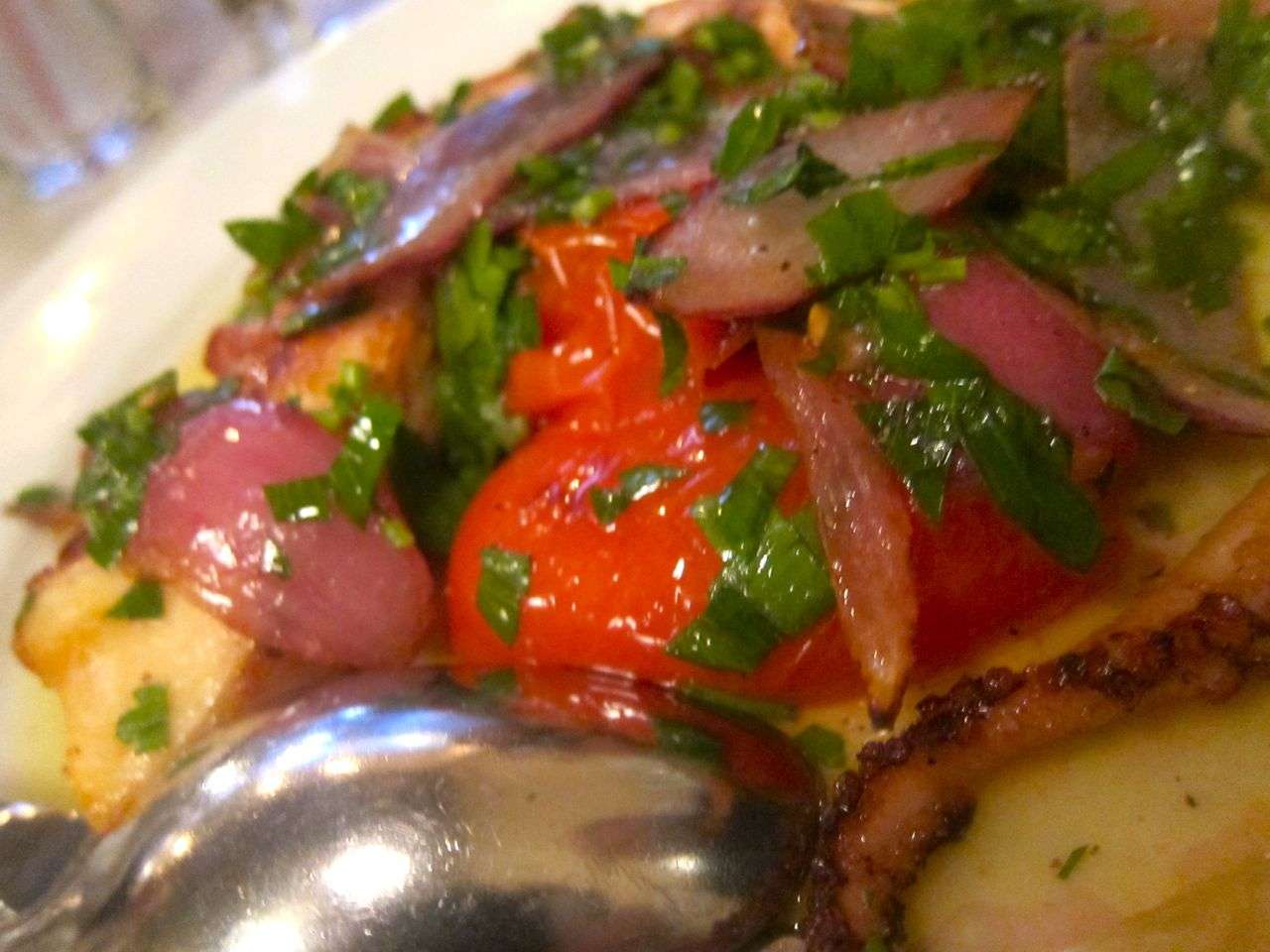
At $18, you’d hope for a little more of this excellent octopus. Our table needed seconds. In an effort to make entrees feel redundant, I ask for bean salad with tomatoes and an order of chopped tomatoes with cucumber and green peppers that could almost be the Shepherd’s salad I once loved in another incarnation. Anna is longing for manti. Once I realize that the clumsy menu’s “house made beef dumplings with garlic spiced yogurt” refers to manti, I’m all for it.
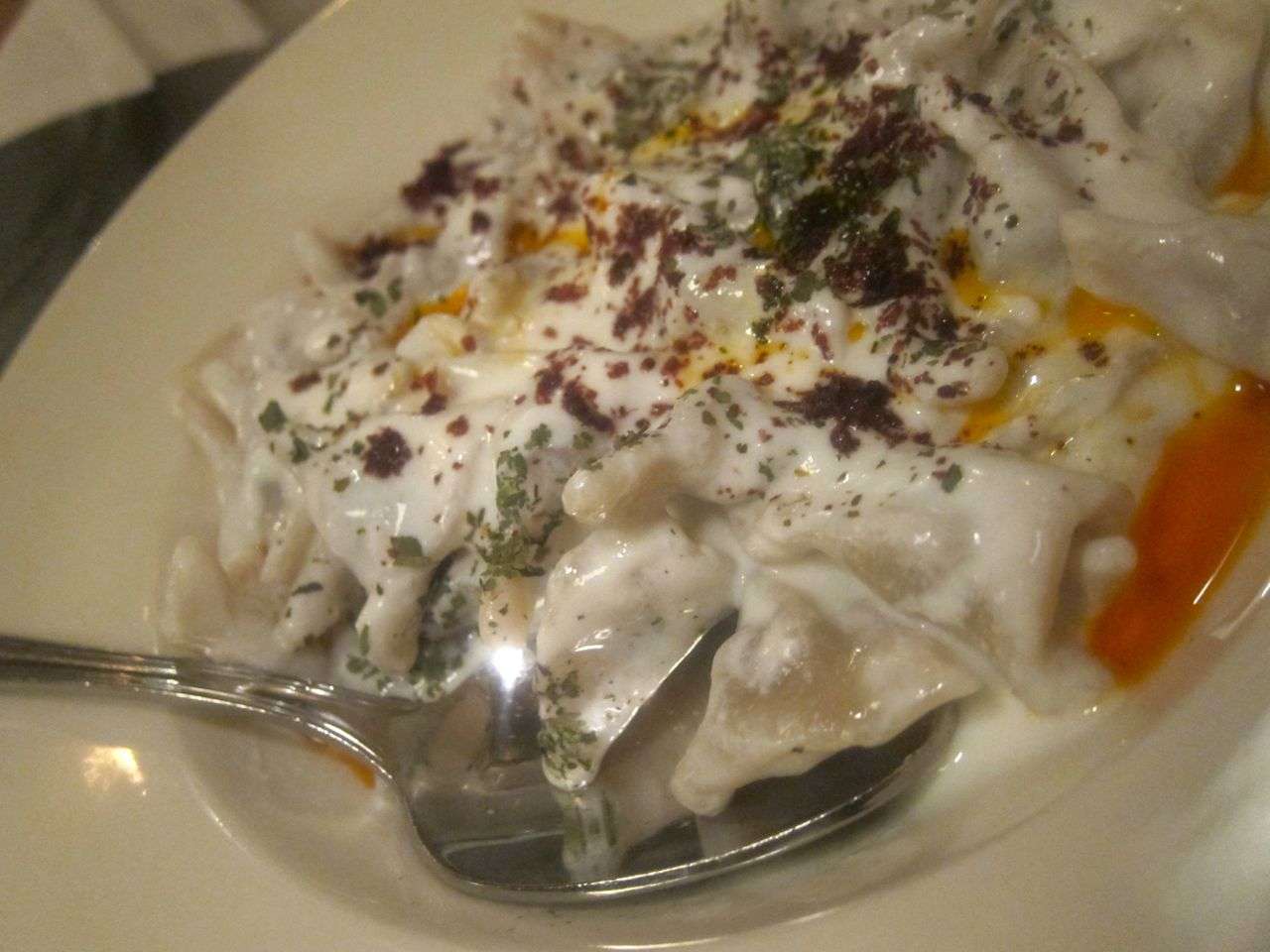
The manti are small beef filled pasta squares, here in a quicksand of garlicky yogurt. Although the charred eggplant purée under the unappealing chunks of hünkar lamb is good, I’d rather have the vegetable all by itself as a meze. Most of this soggy stew is left on the plate. And the lamb shank is an unremarkable monolith too. Most of us revive for the chef’s gift, cinnamon-touched rice pilaf with small shreds of roasted lamb, currants, onions and pine nuts (both caramelized), but we can’t finish that either. (Those caramelized pine nuts will spoil you, Yegen confides later.)
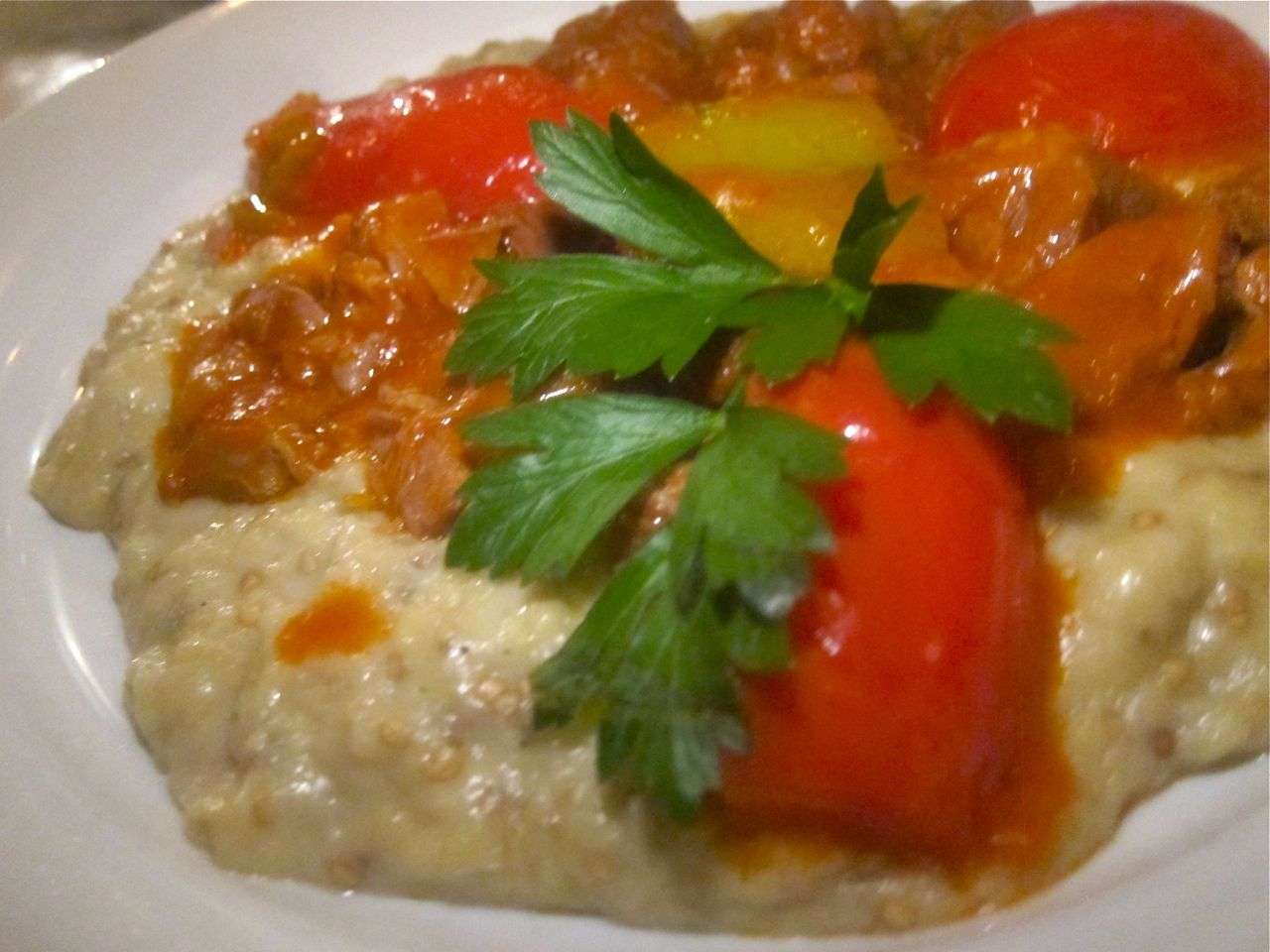
Stewed lamb with tomatoes on a thick eggplant porridge is not as good as eggplant alone. I have trailed this stubborn warrior for three decades as he wandered from one restaurant to the next – from the Turkish Kitchen, to Deniz, Divane, Efendi, Sea Salt, Bi Lokma. He would not put moussaka (musakka) on the menu at Beyoglu because people liked it too much. But he suffered our ordering it in advance and loving it. He refused to serve the fabulous Turkish pide because “people eat too much bread.” Usually he simply disappears “when they get too successful,” leaving most to melt down in his wake.
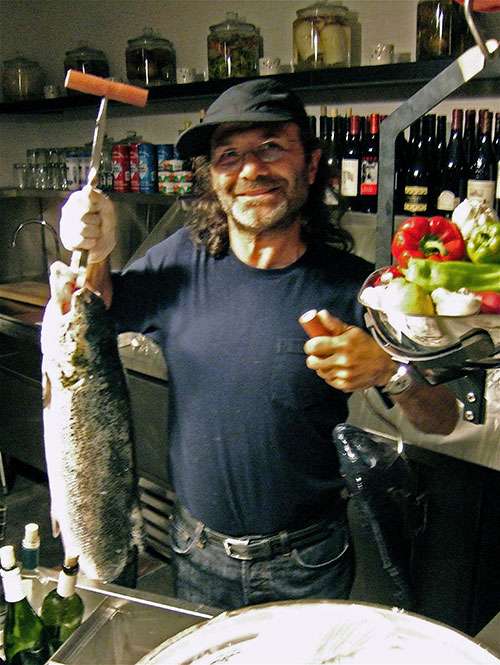
That Turkish popup doll, the Zelig of the grilled octopus circuit, at Sea Salt in 2007. Photo by Steven Richter. The last time I tasted, he was running a steam table near Grand Central Station. But he’s been treading water at this unlikely-looking little spot for eight years. With its bar that looks like a soda fountain, the marble topped tables, bentwood chairs and curlicues of pale green-painted metal, it could be a French brasserie or an ice cream parlor. He thinks everyone is a tourist and they haven’t a clue how to eat the Turkish way. “Americans have no respect for Turkish food because it doesn’t have butter or cream.”
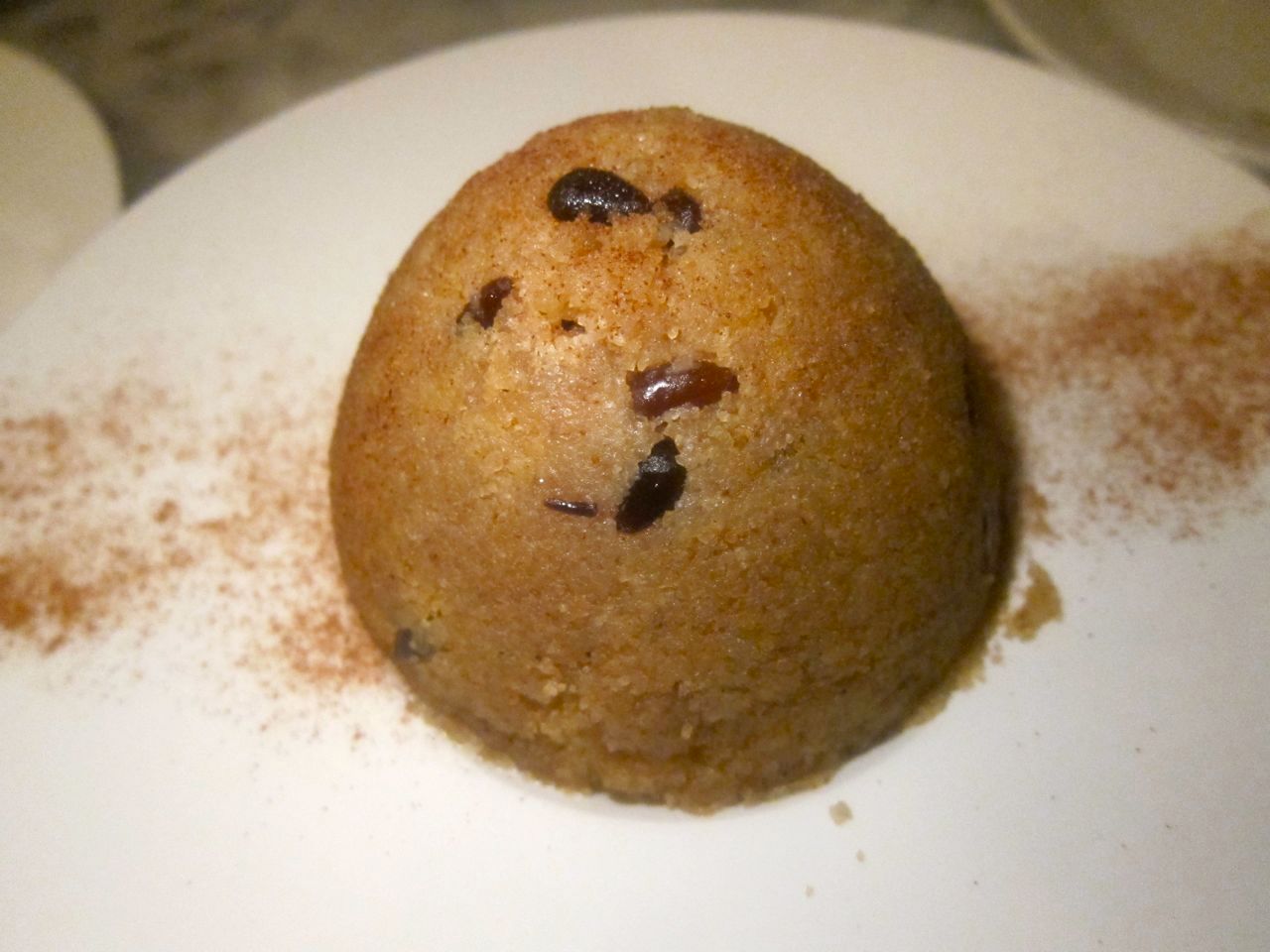
In Turkey, halvah pudding is comfort food after a funereal, according to Chef Yegen.
The lights dim, the music surges. It’s time for dessert. Anna recommends the almond cream. Rice pudding arrives. And the halvah ice cream. If you ask, the chef might explain that he discovered the dish in a Turkish magazine. “It’s semolina cooked in butter, stirred with a wooden spoon, a dish for someone who dies.”
“You mean they bury it with the dead person, or are you saying it’s for the mourners?” I ask.
“Yes, for the funeral. But not so many people die every day,” Yegen notes, “so I make it here with ice cream.”
928 Second Avenue between 49th and 50th Streets. 212 583 1900. Every day from noon until 11 pm.
Photographs may not be used without permission from Gael Greene. Copyright 2013. All rights reserved.
Click here to follow my twitterings. And click here to see my vintage evening bags for sale on Etsy.